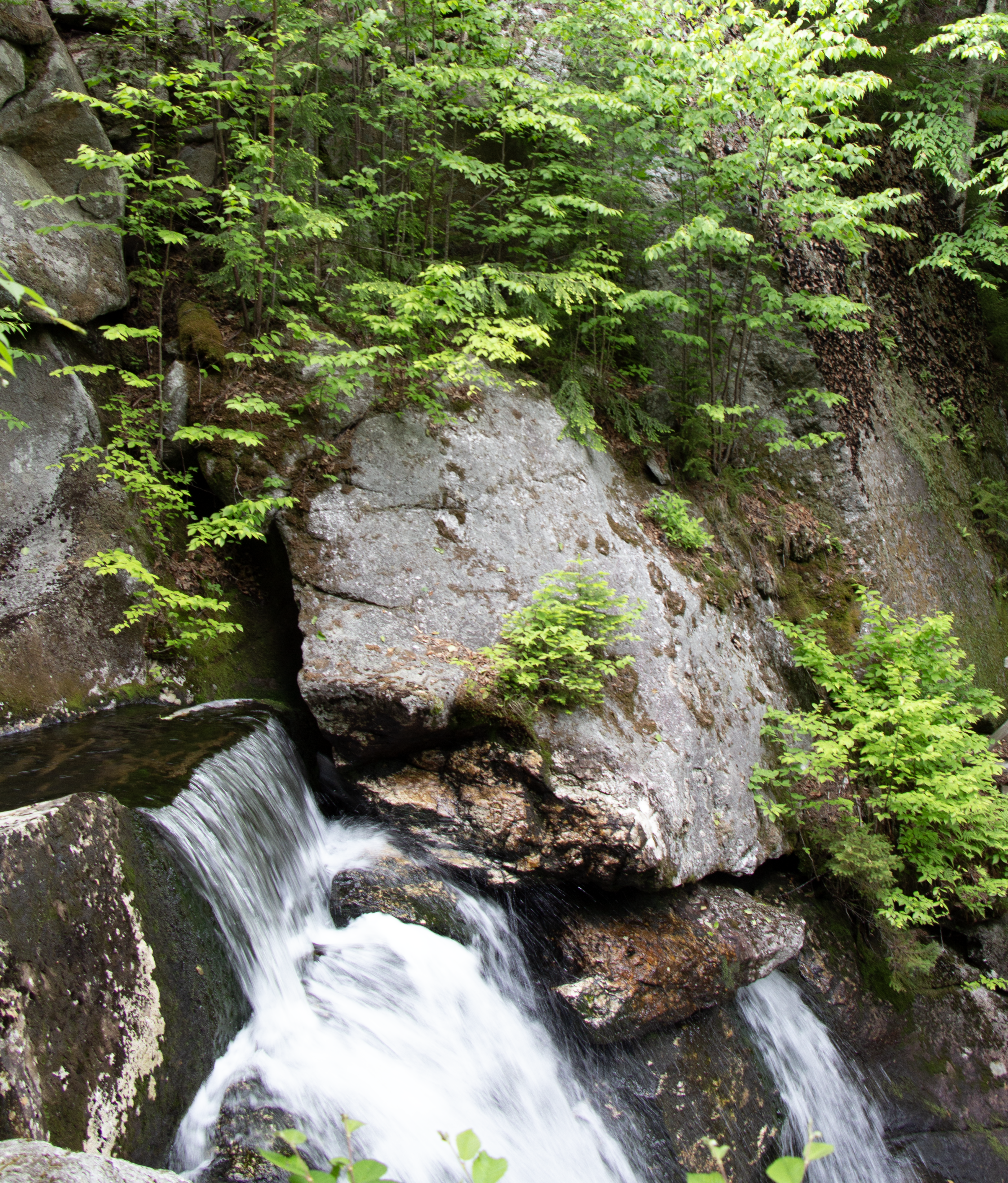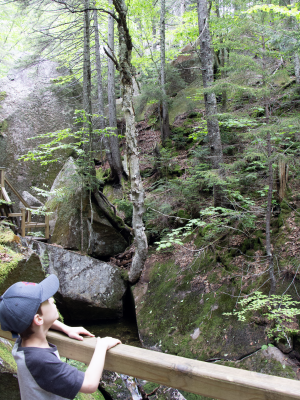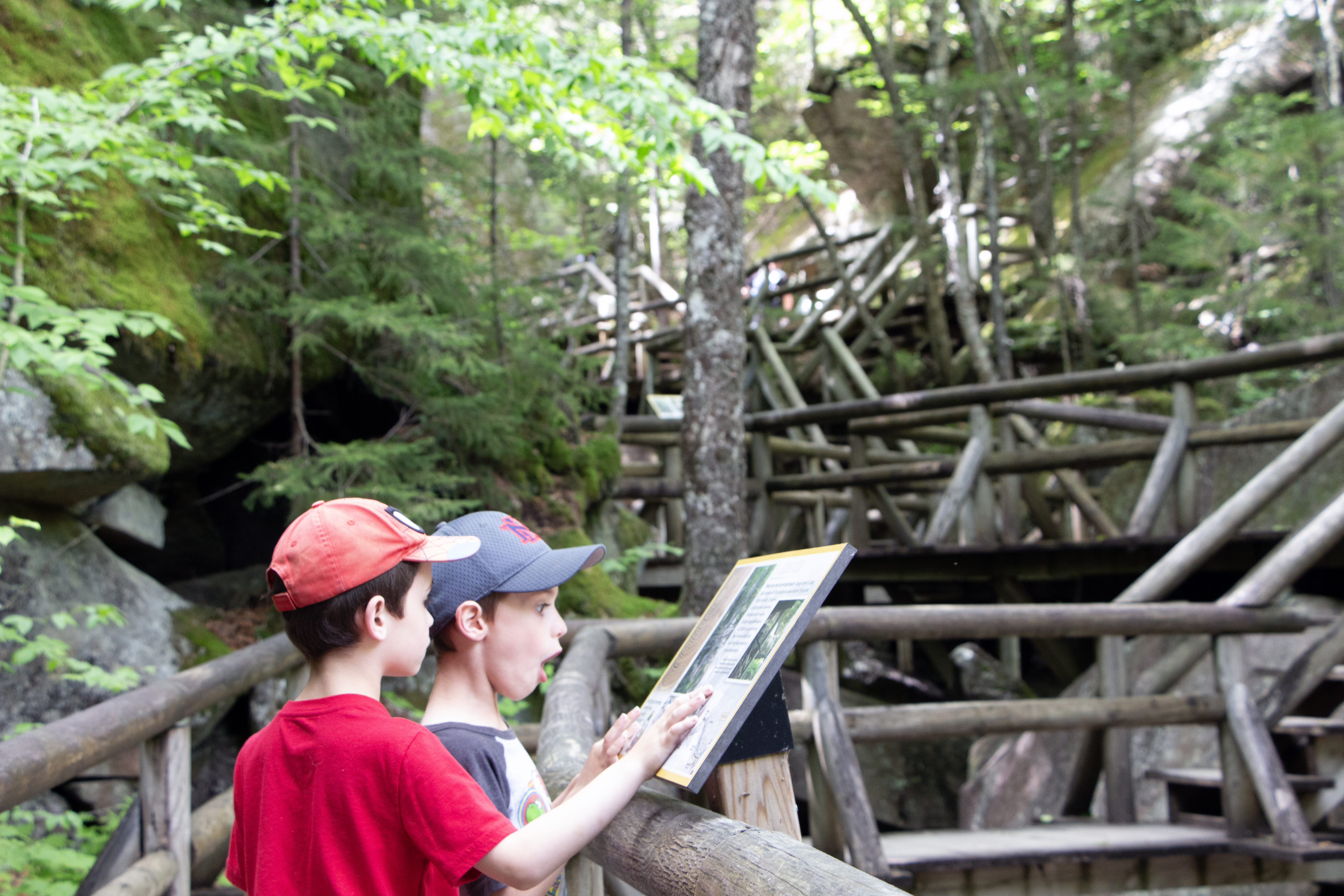- Tags:
- Recreation,
- Forest Journal

Visit one of New Hampshire’s three famous gorges and experience the natural air conditioning. Lost River Gorges and Boulder Caves, pictured, is located in Kinsman Notch, in North Woodstock.
When I started making a bucket list for the summer, I remembered finding relief from scorching temperatures between the dripping, mossy walls of Lost River Gorge and The Flume.
That led to a question: what is the difference between a gorge and a flume and why do these natural space stay cool all year-round?

As a transplant to New Hampshire from Alaska, where I knew more about glaciers than gorges, I came to know the Franconia Notch attraction as just “The Flume.”
But, it turns out that a flume is just a gorge — and a gorge is very similar to a canyon, except steeper and narrower.
You might not know, however, that the nonprofit Society for the Protection of New Hampshire Forests has been integral to protecting three of the state’s most famous gorges: Chesterfield Gorge, The Flume Gorge, and Lost River Gorge.
All are great places to enjoy nature this summer and beat the heat, without schlepping towels, chairs, and umbrellas to the beach.
So how do the state’s top gorges stack up?
The Flume Gorge extends 800 feet from the base of Mount Liberty. Its walls are up to 90 feet tall and 20 feet apart. It’s been protected since 1927, when the Forest Society completed a successful campaign to conserve 6,000 acres in Franconia Notch (also including the Old Man of the Mountain), which the state of New Hampshire has owned ever since.
Lost River Gorge’s boardwalk trail is close to 4,000 feet long and visitors descend about 300 feet once inside, according to General Manager Kate Weatherell. The largest waterfall, Paradise Falls, is 35 feet tall and a giant pothole extends to at least 60 feet below the top of the gorge.
Lost River Gorge is part of a 157-acre property protected and cared for by the Forest Society since 1912. Today, White Mountains Attractions Association leases and operates the Lost River Gorge & Boulder Caves attraction at the property in North Woodstock.

There’s little information available about the size of Chesterfield Gorge, which is lesser known than the other two. But, that makes the gorge a hidden gem that is always fun to discover. The original property was purchased by a local farmer in 1936, who sold it to the Forest Society to protect it. The Forest Society later donated the land to the state of New Hampshire.
For comparison’s sake, the country’s most popular canyon, the Grand Canyon, is approximately one mile deep (5,280 feet), 18 miles wide (95,040 feet), and 277 miles long.
Here in New Hampshire, our wild wonders are made from granite and basalt and forged by frost and rushing mountain waters. For kids and adults alike, all of the gorges offer a close-up look at unique ecosystems that are part of larger, conserved forested areas. You can see trees rooted on glacial boulders and listen to the sound of water flowing through lichen-covered walls.
On a visit to Lost River Gorge & Boulder Caves in June, I asked my 7-year-old twins, Jonah and Evan, why they thought the gorge stayed so cool. I told them about the volunteers who were still cleaning ice off of the boardwalks in May to prepare for visitors.
“No sunshine and lots of water,” Jonah responded.
Indeed, it was 62 degrees at the top of the gorge that day and 56 degrees at the bottom, although there was some sunlight trickling into the caves inside the Gorge.
It’s a little more complicated than Jonah’s explanation, according to Forest Society Senior Director of Education Dave Anderson.
“Another key to keeping gorges and forested ravine communities cool is gravity,” he said. “An invisible river of heavier cool damp air flows downslope into valleys while draining higher surrounding hills.
“Trees best adapted to cold damp sites — conifers, particularly red spruce — create cool shaded microclimates in ravines and gorges that are forested. The topography, dense shade and falling water create a refrigeration effect such that visitors can feel the temperature differential — natural air conditioning — on the hottest days of summer.”
After we had crawled and squeezed through nearly every cave at Lost River Gorge and Evan had yelled, “Face your fears!” each time I hesitated, we reached the Judgment Hall of Pluto. There, we found the coldest place to rule them all — a waterfall inside a cave. We were lucky to see it, given that the cave can be closed due to high water.
The fresh, cold spray splashing my face inside the cave was a treat well worth the trip.
Visit the New Hampshire gorges:
- Chesterfield Gorge Natural Area, 1823 Route 9, Chesterfield
This 13-acre park, owned and managed by NH State Parks, includes a .7 mile walk through the gorge.
- The Flume Gorge, 852 Daniel Webster Highway, Lincoln
A two-mile loop trail takes you from the visitor’s center through the Flume Gorge with views of the 45-foot Avalanche Falls at the top of the gorge.
For more information about both gorges and online reservations for The Flume, visit nhstateparks.org
- Lost River Gorges & Boulder Caves, 1712 Lost River Road, North Woodstock
1 mile of boardwalk trail, including 1,000 steps, takes visitors into the gorge. Eleven boulder caves are optional to explore.
For more information and online reservations, visit lostrivergorge.com
Anna Berry is the director of communications and digital outreach for the Forest Society. She can be reached at aberry@forestsociety.org.
